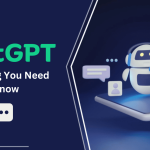
The artificial intelligence landscape stands on the brink of another seismic shift. While GPT-4 continues to reshape industries and workflows across the globe, OpenAI is already developing its successor: GPT-5. This next-generation AI language model promises to push the boundaries of what’s possible with artificial intelligence even further.
Since OpenAI released ChatGPT in late 2022, the world has witnessed an unprecedented acceleration in AI adoption. Businesses have integrated AI writing assistants into their operations, students use AI for research and learning, and developers build applications powered by large language models. Now, as we look toward the future, GPT-5 represents the next leap forward in this rapidly evolving field.
But what exactly can we expect from GPT-5? When will it arrive, and how will it differ from current AI models? This comprehensive guide explores everything we know about OpenAI’s most anticipated release, examining potential features, applications, and the impact this technology could have across various sectors.
What is GPT-5?
GPT-5 is OpenAI’s upcoming large language model, designed to be the successor to GPT-4. Like its predecessors, GPT-5 will be a generative pre-trained transformer model capable of understanding and generating human-like text. However, this next iteration promises significant improvements in reasoning capabilities, factual accuracy, and multimodal understanding.
The GPT series has evolved dramatically since the first model launched in 2018. GPT-1 demonstrated the potential of transformer architecture, GPT-2 showed impressive text generation capabilities, GPT-3 brought AI to mainstream attention, and GPT-4 introduced multimodal capabilities and enhanced reasoning. GPT-5 aims to address current limitations while introducing entirely new capabilities.
OpenAI CEO Sam Altman has hinted that GPT-5 will represent a substantial upgrade over GPT-4, potentially achieving artificial general intelligence (AGI) capabilities in certain domains. This suggests the model will demonstrate more sophisticated reasoning, better contextual understanding, and improved performance across a wider range of tasks.
Expected Features and Improvements
Enhanced Reasoning and Problem-Solving
One of the most anticipated improvements in GPT-5 is its enhanced reasoning capabilities. Current language models sometimes struggle with complex logical reasoning, mathematical problems, and multi-step problem-solving. GPT-5 is expected to demonstrate more sophisticated analytical thinking, allowing it to tackle complex problems with greater accuracy and reliability.
This improvement could revolutionize fields that require heavy analytical work, from scientific research to financial modeling. The enhanced reasoning capabilities may enable GPT-5 to break down complex problems into manageable components, consider multiple variables simultaneously, and arrive at more accurate conclusions.
Improved Factual Accuracy
Hallucination—when AI models generate plausible-sounding but incorrect information—remains one of the biggest challenges with current language models. GPT-5 is expected to significantly reduce these instances through better training methodologies and improved fact-checking mechanisms.
OpenAI has been working on techniques to ground language models in factual information and reduce the tendency to fabricate details. GPT-5 may incorporate real-time fact-checking capabilities or more robust training on verified information sources.
Advanced Multimodal Capabilities
While GPT-4 introduced vision capabilities, GPT-5 is expected to expand multimodal understanding significantly. This could include better image analysis, video processing capabilities, and potentially even audio generation and analysis. The model might be able to understand and generate content across multiple formats simultaneously.
These enhanced multimodal capabilities could enable new applications in education, content creation, and accessibility tools. Imagine an AI that can analyze a video, generate accurate subtitles, create a summary, and answer detailed questions about the content—all in real-time.
Longer Context Windows
Context window—the amount of text an AI model can consider at once—has been a limiting factor for many applications. GPT-5 is expected to support significantly longer context windows, potentially allowing it to process entire documents, books, or extensive conversation histories without losing important details.
This improvement would be particularly valuable for applications requiring analysis of lengthy documents, such as legal contract review, academic research, or comprehensive content editing.
Potential Release Timeline
OpenAI has not announced an official release date for GPT-5, and speculation about timing varies widely across the tech industry. Based on historical patterns and statements from OpenAI leadership, several factors influence the potential timeline.
Sam Altman has suggested that the development of GPT-5 is underway but emphasized OpenAI’s commitment to safety and thorough testing. The company has stated it will not rush the release, prioritizing safety considerations and ensuring the model meets high standards for reliability and alignment.
Industry analysts suggest GPT-5 could arrive anywhere from late 2024 to 2026, depending on various factors including computational requirements, safety testing, and regulatory considerations. The increasing complexity of training larger models, combined with the need for extensive safety testing, suggests OpenAI will take a measured approach to the release.
The timeline may also be influenced by competition from other AI companies, regulatory developments, and the availability of computational resources needed for training such a large model.
Transformative Use Cases Across Industries
Education and Learning
GPT-5 could revolutionize personalized education by providing more sophisticated tutoring capabilities. With enhanced reasoning and improved factual accuracy, the model could serve as a reliable learning companion capable of explaining complex concepts, providing detailed feedback on assignments, and adapting to individual learning styles.
The improved multimodal capabilities could enable GPT-5 to analyze student work across different formats—written assignments, diagrams, presentations—and provide comprehensive feedback. This could make high-quality, personalized education more accessible worldwide.
Healthcare and Medical Research
The enhanced reasoning capabilities of GPT-5 could support medical professionals in diagnosis, treatment planning, and research. While AI cannot replace human medical expertise, GPT-5 might assist in analyzing patient data, reviewing medical literature, and identifying potential treatment options.
The model’s improved factual accuracy would be crucial in medical applications, where misinformation could have serious consequences. GPT-5 might help medical professionals stay updated with the latest research and best practices across various specialties.
Software Development and Engineering
GPT-5 could significantly advance AI-assisted programming by understanding complex codebases, debugging intricate problems, and generating more sophisticated solutions. The extended context window would allow the model to consider entire projects when making suggestions or identifying issues.
Enhanced reasoning capabilities could enable GPT-5 to understand system architecture, suggest optimizations, and even help with complex problem-solving that currently requires senior developer expertise.
Creative Industries and Content Creation
The creative applications of GPT-5 could expand dramatically with improved multimodal capabilities. Content creators might use the model to generate ideas, write scripts, create marketing materials, and even assist with visual content planning.
The model’s enhanced understanding could lead to more nuanced and contextually appropriate creative output, supporting rather than replacing human creativity.
Technical Challenges and Considerations
Computational Requirements
Training and running GPT-5 will likely require massive computational resources, potentially exceeding those needed for GPT-4. This raises questions about accessibility and environmental impact. OpenAI will need to balance model capabilities with practical considerations around deployment and cost.
The computational requirements may influence how GPT-5 is made available—whether through API access, specialized hardware requirements, or cloud-based services.
Safety and Alignment
As AI models become more capable, ensuring they remain aligned with human values and intentions becomes increasingly critical. GPT-5’s enhanced capabilities could amplify both beneficial and potentially harmful applications.
OpenAI has emphasized its commitment to AI safety research and responsible deployment. The development of GPT-5 likely includes extensive work on alignment techniques, safety testing, and risk mitigation strategies.
Regulatory and Ethical Considerations
The release of GPT-5 will occur against a backdrop of increasing AI regulation and ethical scrutiny. Governments worldwide are developing frameworks for AI governance, which may influence how and when GPT-5 is released.
OpenAI will need to navigate complex regulatory environments while ensuring the model’s capabilities can be harnessed for beneficial purposes.
Preparing for the GPT-5 Era
Organizations and individuals should begin preparing for the arrival of GPT-5 by understanding current AI capabilities and limitations. This preparation involves developing AI literacy, establishing ethical guidelines for AI use, and identifying potential applications within specific domains.
Businesses should assess their current AI integration strategies and consider how more advanced capabilities might enhance their operations. This includes evaluating data infrastructure, training staff on AI tools, and developing policies for responsible AI use.
Educational institutions and training programs should prepare curricula that account for increasingly sophisticated AI capabilities while emphasizing uniquely human skills that complement AI.
The development of GPT-5 represents more than just a technological upgrade—it signals our continued journey toward more capable AI systems that could fundamentally change how we work, learn, and create. While the exact timeline and features remain uncertain, the potential impact is clear: GPT-5 will likely accelerate AI adoption across industries and introduce new possibilities we’re only beginning to imagine.
As we await further details from OpenAI, staying informed about AI developments, understanding current capabilities, and preparing for more advanced AI integration will be crucial for individuals and organizations looking to harness the potential of next-generation AI language models.

